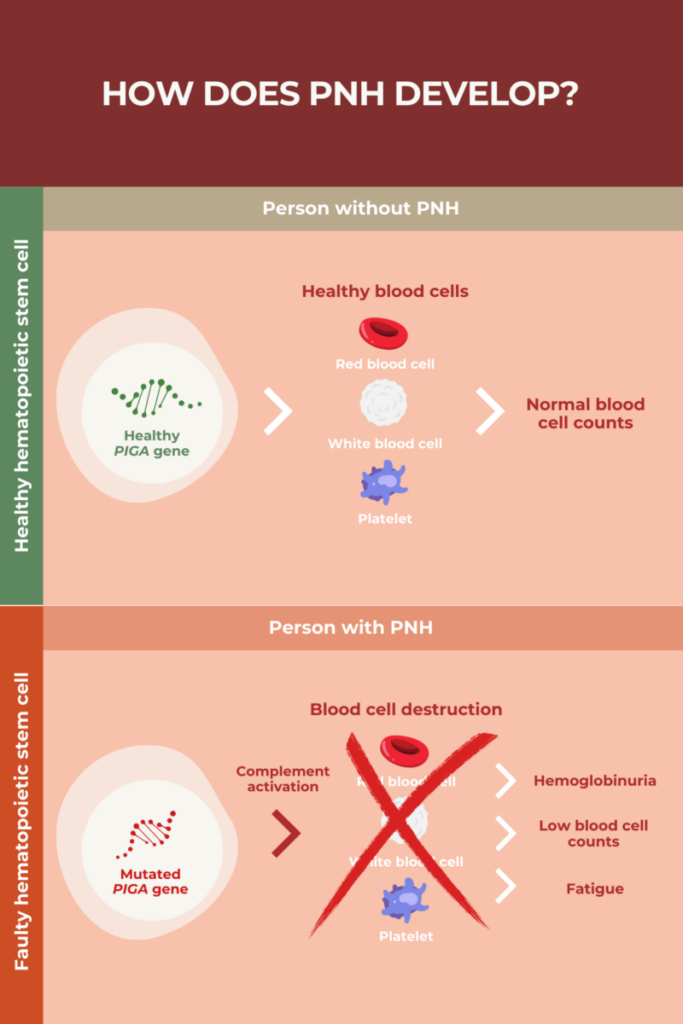FAQs about PNH
Ongoing blood cell damage associated with paroxysmal nocturnal hemoglobinuria (PNH) can put continuous stress on body systems and cause the disease to worsen over time for some patients. However, with modern therapies, it’s becoming increasingly common for patients to have stable disease for many years. PNH symptoms can vary significantly over time, and they often occur in sudden attacks, which may be triggered by certain events like physical exertion or infections.
Paroxysmal nocturnal hemoglobinuria (PNH) is estimated to affect 0.5 to 1.5 of every million people in the general population. In the U.S., about 500 people are diagnosed with PNH every year.
Prior to the advent of modern therapies, people with paroxysmal nocturnal hemoglobinuria (PNH) typically only lived a decade or two following the onset of the disease. However, with modern treatments, the life expectancy for someone with PNH is comparable to that of the general population.
Paroxysmal nocturnal hemoglobinuria (PNH) and aplastic anemia are both bone marrow failure disorders that affect the stem cells that give rise to new blood cells. While PNH often co-occurs with aplastic anemia, the two conditions are distinct: PNH is caused by mutations in stem cells in the bone marrow, while aplastic anemia is driven by an autoimmune attack that damages bone marrow stem cells.
Related Articles

 Fact-checked by
Fact-checked by 



